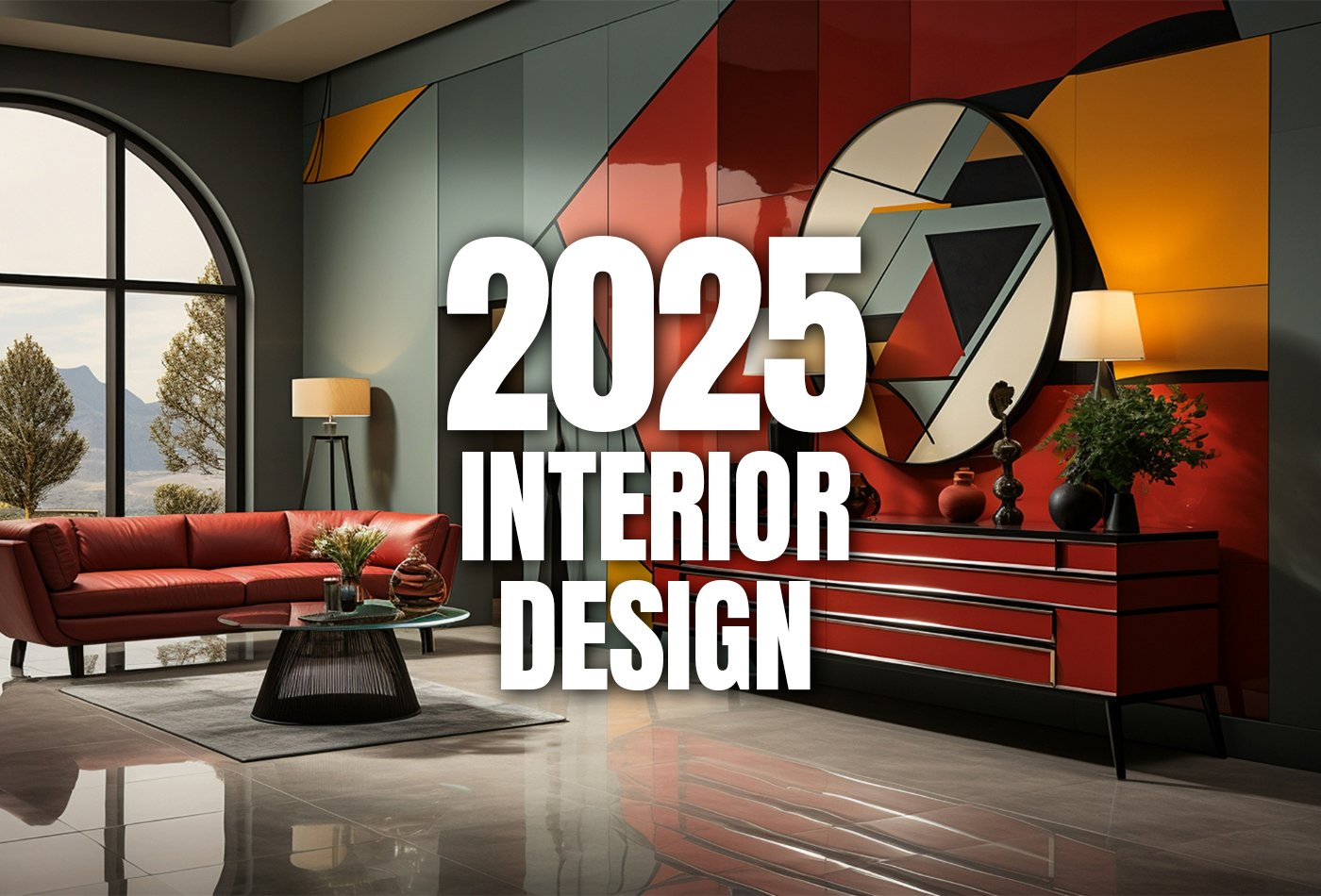As we look toward the future, the world of interior design is shifting in exciting and profound ways. Moving beyond fleeting fads, the trends defining 2025 are rooted in a deeper purpose: creating homes that nurture our well-being, express our unique personalities, and respect the environment.
This year, it’s all about intention. Homes are becoming holistic sanctuaries that support our mental and physical health through design. Get ready to embrace a new era of comfort, character, and conscious living. Here are the key interior design trends that will define 2025.
- Biophilic Design 2.0: Beyond the Potted Plant
The connection between nature and well-being is well-established, but in 2025, it evolves from a trend into a standard. It’s no longer just about adding a few houseplants.
- What it is: A deeper, more integrated approach to bringing the outdoors in. Think organic, non-toxic materials like cork, rammed earth walls, limestone finishes, and unlacquered brass that patinas over time.
- Key Elements: Maximizing natural light, incorporating water features, using a palette of earthy tones (moss green, terracotta, ochre), and choosing furniture with raw, natural textures like live-edge wood and woven rattan.
- Why it’s trending: In our high-tech, fast-paced world, our homes need to be a grounding counterbalance. This connection to nature reduces stress and improves air quality and overall happiness.
- Dopamine Décor: The Rise of Personal Expression
Minimalism is making room for more! Dopamine décor is all about embracing joy, color, and individuality. It’s a rejection of sterile, showroom-like spaces in Favor of homes that tell a story and spark delight.
- What it is: Bold color palettes, playful patterns, quirky vintage finds, and personalized collections. Think maximalist without the clutter—it’s curated, intentional, and full of life.
- Key Elements: Statement wallpapers (especially in ceilings!), vibrant art, textured fabrics like bouclé and velvet, and “conversation starter” furniture pieces.
- Why it’s trending: After years of subdued palettes, people are craving vibrancy and self-expression. Our homes should be a source of energy and joy, reflecting our unique histories and tastes.
- “Quiet Luxury” at Home: The New American Aristocracy
Inspired by fashion, the “quiet luxury” aesthetic—think stealth wealth and old money—is making a major impact on interiors. It’s the antithesis of loud logos and flashy displays.
- What it is: An emphasis on exceptional quality, timeless pieces, and impeccable craftsmanship. The palette is neutral and sophisticated (cream, taupe, olive green, charcoal), but the interest comes from incredible texture and form.
- Key Elements: Investment furniture with clean lines, natural materials like marble and solid oak, custom-built cabinetry, and luxurious, tactile textiles like linen, cashmere, and mohair.
- Why it’s trending: This trend champions longevity over fast furniture. It’s a sustainable, elegant approach that values heritage and quality, creating a serene and enduringly stylish environment.
- Neurasthenics: Designing for the Brain
The most science-forward trend of 2025 is neurasthenics: designing spaces based on how the brain processes beauty and environment. It’s about creating homes that actively support our cognitive and emotional health.
- What it is: Using design principles—like color, light, symmetry, and nature—to reduce anxiety, improve focus, and promote relaxation. For example, curved furniture and archways are known to be perceived by the brain as safer and more welcoming than sharp angles.
- Key Elements: Soft, rhythmic patterns, harmonious and balanced layouts, calming color psychology (blues and greens for rest, yellows for energy), and dedicated zones for different activities (work, rest, socializing).
- Why it’s trending: As we understand more about mental health, we want our environments to contribute positively to it. Design is becoming a tool for wellness.
- The Truly Integrated Smart Home
Technology in 2025 is becoming invisible and seamless. The goal is to enhance comfort and convenience without compromising on aesthetics.
- What it is: Built-in, wireless technology that blends into the design. Think voice-activated lighting and climate control, automated shading integrated into window frames, and sleek, hidden charging stations.
- Key Elements: App-controlled ambient lighting that changes with the time of day, concealed speakers, and smart appliances that offer both function and a streamlined look.
- Why it’s trending: Technology is a part of our lives, but it shouldn’t dominate our visual space. This trend is about creating a effortless and efficient living experience.

